Creepy crawlies or misunderstood beauties? Royal Mail is launching a stunning series of spider stamps (and they’ll make your mail look like it’s been infested with them!)
People with arachnophobia may soon be dropping their mail, as the Royal Mail has released new stamps featuring British spiders.
Ten of the amazing web-weaving techniques found on the British coast are included in the collection, including the cucumber spider, which gets its name from its light green abdomen.
Then there’s the ladybird spider, named after the insect because of its black spots on a red background, and the nursery web spider, which builds a tent-shaped web for its eggs.
“Many people are afraid of spiders, but these colourful creatures deserve a second look,” said David Gold, Royal Mail’s director of external affairs and policy.
‘They play an essential role in nature and have fascinating survival strategies.
Royal Mail has unveiled images of a set of 10 new stamps featuring original illustrations of spiders found in the UK. With their plain backgrounds, they can make it look like a creepy crawly creature is crawling across your mail
‘As these stamps show, spiders are much more than just the furry cartoon version we hate.’
In the past, Royal Mail stamps depicted butterflies, bees and insects, but not spiders.
Let’s take a closer look at the 10 species, all drawn by Richard Lewington, a wildlife illustrator from Oxfordshire.
SAND BEAR SPIDER
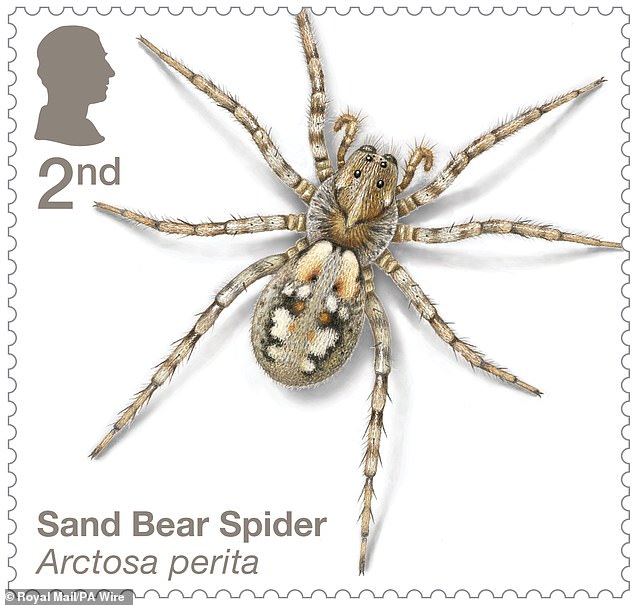
The Sand Bear Spider is one of 10 special stamps featuring original illustrations of spiders found in the UK
Sand bear spiders live on dry sandy soils or in coastal dunes, where they dig their burrows.
It alternates between hiding in its burrow and wandering around in search of prey – mainly insects and other small invertebrates.
Their sandy brown legs often have thin, dark stripes, which allows them to camouflage themselves well with grains of sand of different colours.
CUCUMBER SPIDER
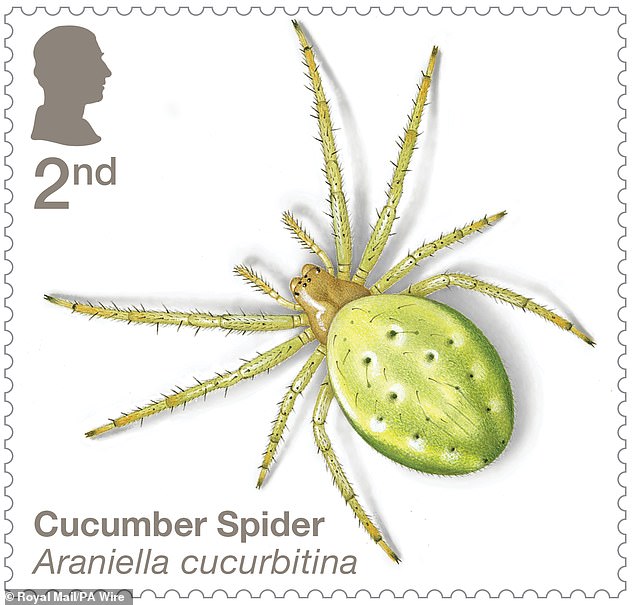
Cucumber spider: So named because of its light green abdomen that resembles a slice of vegetable
This spider gets its name from its light green abdomen that resembles a cucumber slice, down to the seed-like dots.
Cucumber spiders are a common sight in the UK. They are found along woodland edges, in hedgerows and in many other habitats with trees or shrubs.
Their green color makes them good hunters, as they use camouflage to capture prey caught in their webs.
FOREST JUMPING SPIDER
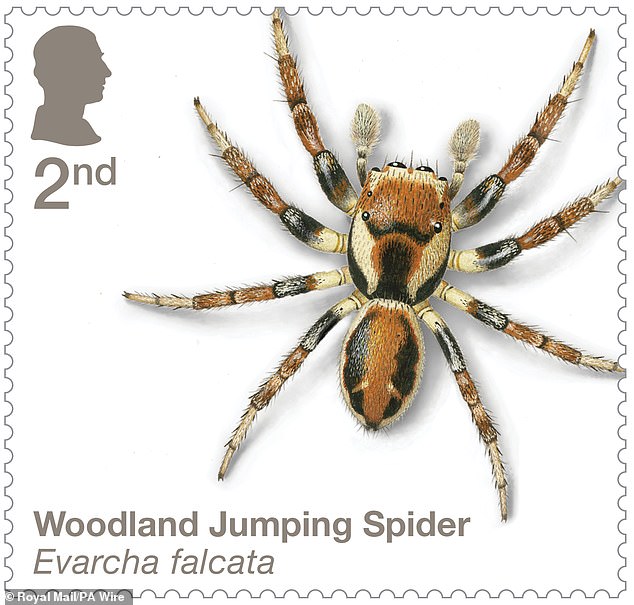
The jumping spider is an agile predator and can impress arachnologists with its great leaps.
Jumping spiders can make spectacular leaps when pouncing on their prey or escaping from danger.
This particular jumping spider – the forest jumping spider – likes to hide in low vegetation, such as bushes.
His long legs allow him to make impressive leaps through the air and his small eyes are said to give him incredible vision.
FOUR-SPOTTED WEB SPINNER ROLLER
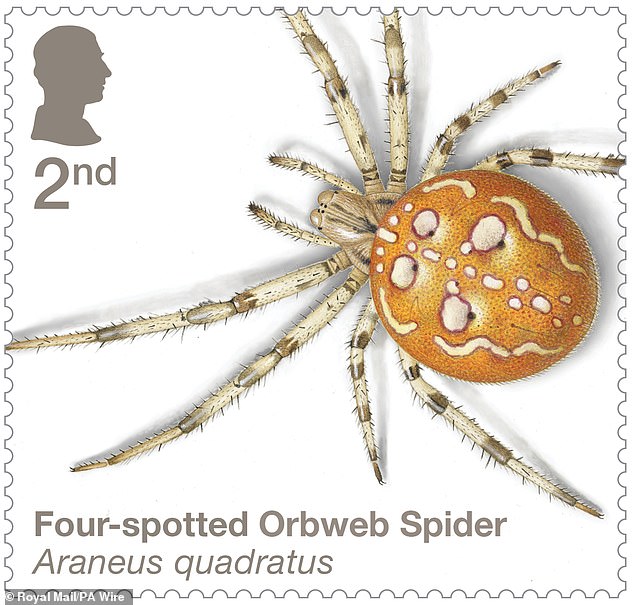
This species is easily recognized in the field by the four large white spots on the round abdomen
This strange-looking creature has four large white spots on its large round abdomen, which can measure 17 mm.
The heavy varieties often come in different colours – from orange-red to light yellow-green.
According to Northumberland National Park, the storm is at its largest and most visible in August and September.
It is during this stage that its true prey-catching abilities can often be observed, as wasps and bumblebees form part of its diet.
HEATHER CRAB SPIDER
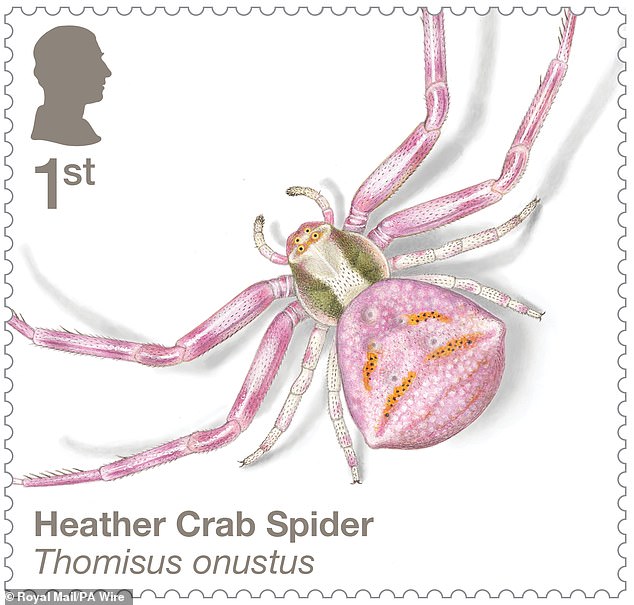
Female heath crab spiders have the ability to change color between white, yellow and pink as a way to match the color of the flower
Moorland crab spiders are mainly found in the central south and south east of England, especially on mature heathland.
Female heath crab spiders can change colour, from white to yellow and pink, allowing them to change the colour of their flowers.
This allows them to evade predators and ambush prey. Males are smaller and usually brown or greenish-yellow in color.
CHILD WEBSPIPE
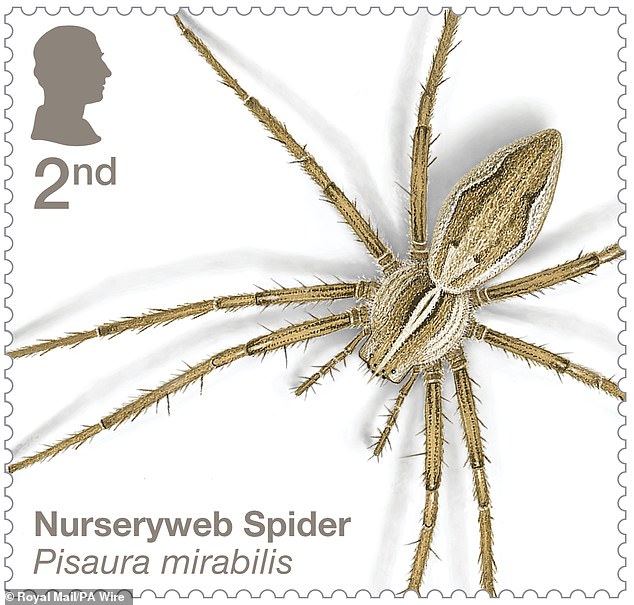
The nursery web spider, common in British grasslands, has brown and black stripes running the length of its body
The nursery web spider has brown and black stripes running the length of its body, as well as a striking light stripe down the middle.
According to Wildlife Trusts, the bird can often be seen ‘sunbathing’ among brambles and nettles in May and June.
Adult birds are active hunters and do not spin webs to catch food, but instead use a fast sprint to catch flies and other insects.
LADYBUG SPIDER
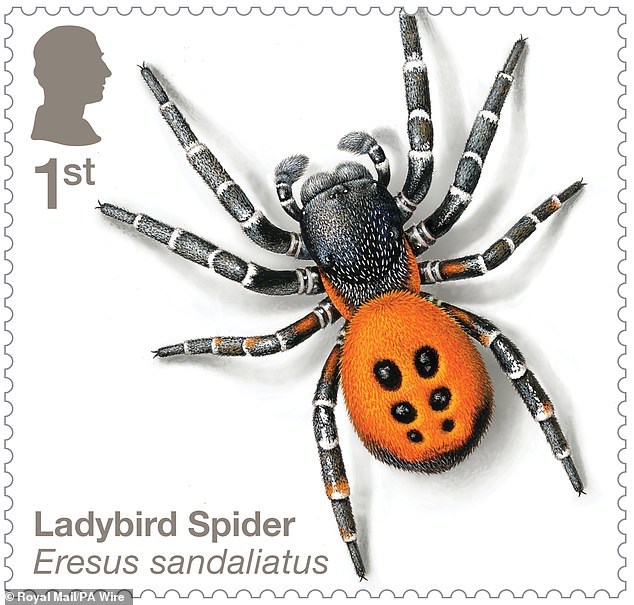
As you may have guessed, the ladybird spider is named after the common garden insect because of its black spots on a red background
The ladybird spider is one of the rarest insects in Britain. It was thought to be extinct for over 70 years until it was rediscovered in 1979.
As the name suggests, this insect is recognizable by its striking red-and-black spotted abdomen.
Ladybird spiders spend most of their lives in their silk-lined burrows underground, only emerging after three to four years to find a mate.
CANDY STRIPED SPIDER
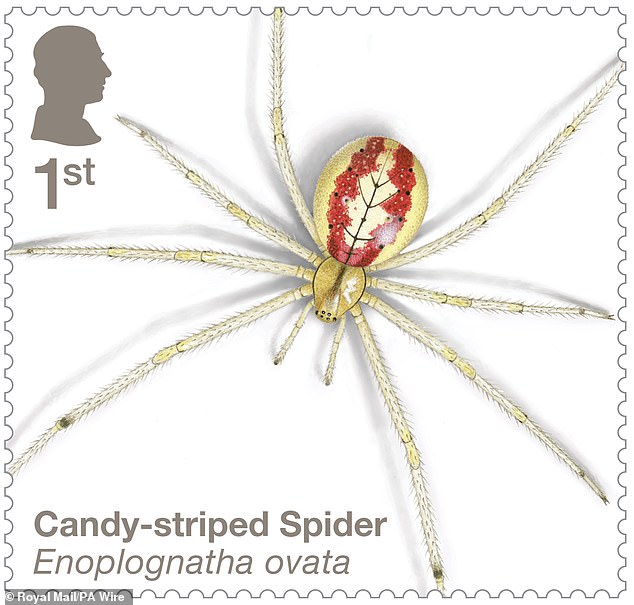
The beautiful striped candy spider, which comes in three colour variations, can be found throughout the British Isles
The striped spider is commonly found in hedgerows and gardens in the UK, where they make their home in low vegetation.
These beautiful spiders are small, with an abdomen measuring no more than 6mm, but they are easily recognised by their bright pink markings.
Pregnant females protect their young by rolling up a bramble or nettle leaf before laying their eggs in it.
WASP SPIDER
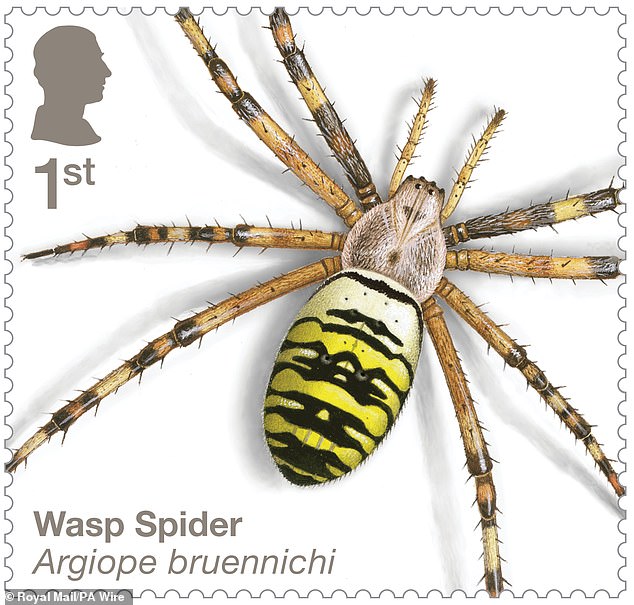
The wasp spider is a great imitator: because it looks just like a regular wasp, it is safe from predators, even though it is not dangerous itself
Wildlife Trusts describe the wasp spider as a ‘great imitator’. The spider looks exactly like a common wasp and protects itself from predators.
This species has recently arrived from Europe and is generally found in the south of England, but is steadily spreading northwards.
Although the wasp spider is not dangerous to humans, the female can be deadly to the male. The male often eats the male during mating.
ZEBRA SPIDER
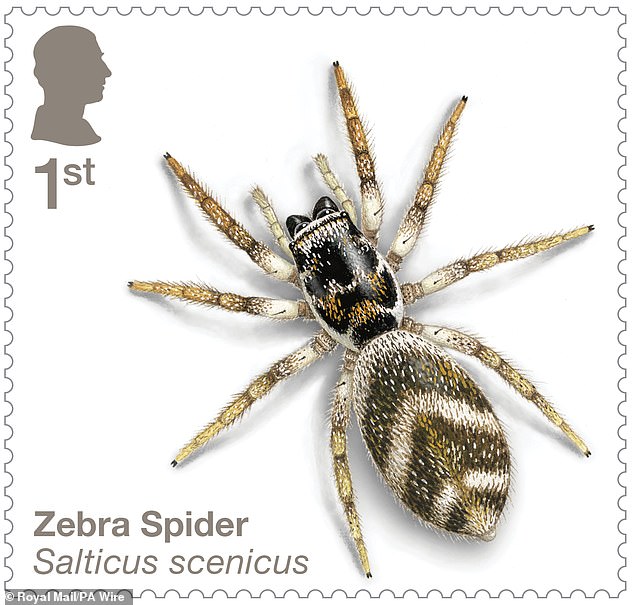
The British Arachnological Society says: ‘This is one of the most common jumping spiders in Britain and can often be spotted hunting on garden walls and fences on warm, sunny days’
The zebra spider is another common jumping species that leaps onto its prey – potentially surprising unsuspecting people.
As the name suggests, the zebra spider has the recognizable black and white stripes of a zebra, making it very noticeable.
From April to October it can be found on walls, rocks and tree trunks and even in houses – although it is not dangerous to us.
Of the approximately 48,000 spider species found worldwide, about 680 have been recorded in the UK.
The 10 stamps and a range of collector’s products can be pre-ordered from today and will be available from 26 September.
